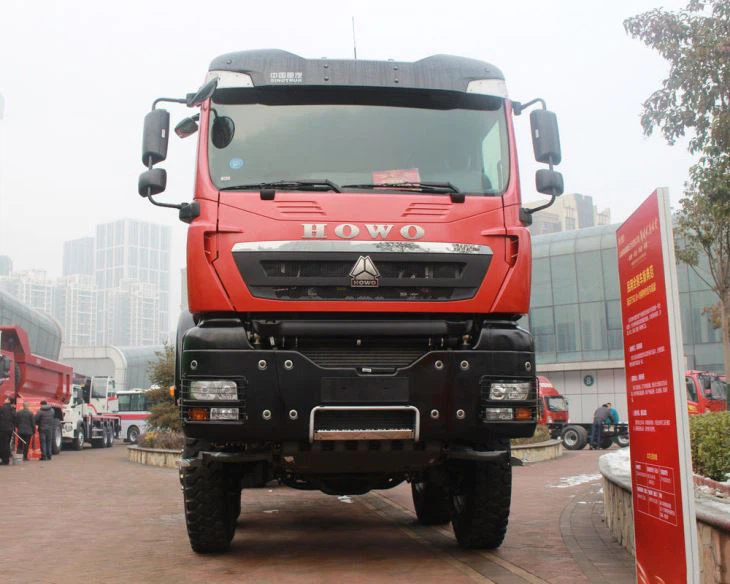Understanding the Back of Garbage Truck: Design, Function, and Safety

The back of a garbage truck is a crucial component of waste management systems worldwide. As urban areas grow and waste generation increases, understanding the functionality and design of garbage trucks, specifically their rear section, becomes vital. This article delves into the intricacies of the back of garbage trucks, exploring its features, operational mechanisms, and safety considerations.
What is the Back of a Garbage Truck?
The back of a garbage truck typically includes a collection compartment, loading mechanisms, and hydraulic systems to facilitate the loading, compacting, and unloading of waste. These components are designed to make the waste collection process efficient and safe.
The Structure of the Back of a Garbage Truck

The design of the back of a garbage truck can vary based on the type of vehicle and its intended use. Generally, it includes the following sections:
1. Loading Chute
The loading chute, located at the back, is where waste enters the collection compartment. Some trucks feature a hinged or sliding door for easier access.
2. Compaction Mechanism
Once waste is loaded, the compaction mechanism compresses the waste to maximize space. This is often done using a hydraulic press.
3. Collection Compartment

This is the central storage area for collected waste. It varies in size depending on the truck’s capacity and type.
Types of Garbage Trucks and Their Configurations
Different types of garbage trucks utilize varying configurations in the back section. Here are some common types:
1. Rear Loader Trucks
Rear loader trucks have a flat bed with a compaction mechanism at the back. The driver or workers throw waste through the rear door into the collection compartment. These trucks are common in residential neighborhoods.
2. Side Loader Trucks
Side loader trucks have a side compartment for waste collection, operated by an automated system or by drivers. This design minimizes the need for workers to exit the vehicle, enhancing safety and efficiency.
3. Front Loader Trucks
Front loader trucks are often used for commercial waste collection. They have large forks at the front to lift and dump waste bins directly into the truck’s compartment.
The Role of the Back of the Garbage Truck in Waste Management
The functionality of the back of garbage trucks plays a key role in the broader waste management process, specifically in urban centers.
Efficient Waste Collection
With features designed for quick waste loading and compaction, the back of garbage trucks ensures that garbage collection is both efficient and effective. This efficiency helps reduce the number of trips a truck needs to make, saving time and resources.
Environmental Impact and Sustainability
Modern garbage trucks are increasingly designed with sustainability in mind. The compaction systems minimize leaks and spills, while efficient loading reduces fuel consumption and greenhouse gas emissions.
Safety Features
The back of garbage trucks incorporates several safety features to protect workers and the public:
1. Cameras and Sensors
Many newer garbage trucks come equipped with cameras and sensors to help drivers navigate safely and reduce blind spots.
2. Warning Lights and Sirens
To alert pedestrians and other vehicles when the truck is in operation, bright warning lights and sirens are often installed at the back of the truck.
3. Compacting System Safety

Safety locks and automatic shut-off functions ensure that the compaction mechanism operates safely without risking injury to workers.
Best Practices for Working with Garbage Trucks
For those involved in waste management, adhering to best practices while working with or around garbage trucks can enhance safety and efficiency.
For Drivers and Operators
- Conduct regular inspections of the back of the truck.
- Familiarize yourself with the operation of the compaction mechanism.
- Stay aware of your surroundings and monitor for pedestrians and other vehicles.
For Waste Collection Workers
- Always wear safety gear, including reflective vests.
- Use the buddy system to enhance safety during collection.
- Observe safety protocols when loading waste at the back of the truck.
For Local Communities
- Stay clear of garbage trucks during operation.
- Respect posted warning signs and signals from truck operators.
- Report any safety issues or hazards to local waste management services.
Technological Advancements in Garbage Trucks
The waste management industry is continually evolving, with technological advancements enhancing the functionality of garbage trucks, especially at the back end.
Automation and Smart Systems
Many modern garbage trucks feature automated loading and compacting systems. These innovations reduce the need for workers to handle waste manually, improving safety and efficiency.
Telematics and Fleet Management Software
Telematics systems allow for real-time tracking of garbage trucks, optimizing routes and enhancing operational flow. These systems can also monitor the health of the truck’s components, allowing for timely maintenance.
Cleaning and Maintenance of the Back of a Garbage Truck
Keeping the back of a garbage truck clean is essential for both operational efficiency and sanitation.
Cleaning Procedures
- Regularly remove debris and contaminants from the loading chute.
- Use pressure washing to clean the compaction chamber.
- Apply disinfectants to eliminate odors and prevent bacterial growth.
Maintenance Tips
- Inspect hydraulic systems for leaks or malfunctions.
- Check for wear and tear on the compaction mechanism.
- Schedule regular professional service checks for the back end of the truck.
Common Challenges Faced by Garbage Trucks
The back of garbage trucks, while efficient, does face several challenges that can impact their operation.
Clogging and Jamming
One common issue is the clogging or jamming of waste in the compacting mechanism. This can slow down operations and may require manual intervention to resolve.
Weight Limitations
Exceeding the weight capacity of the back section can lead to damage and inefficiency. Operators must be vigilant about monitoring weight loads.
Environmental Regulations
Compliance with environmental regulations can pose challenges, requiring regular updates and modifications to garbage trucks to meet new standards.
A Look Ahead: The Future of Garbage Trucks
As urbanization continues and waste management needs evolve, the design and functionality of the back of garbage trucks will likely change in response.
Potential Innovations
- Incorporation of electric and hybrid models for reduced emissions.
- Advanced cleaning technologies that minimize odors and pathogens.
- Integration of AI for better route and operational efficiency.
Implications for Waste Management
These innovations have the potential to significantly impact how waste is collected and processed, contributing to more sustainable practices in the waste management industry.
FAQs About the Back of Garbage Trucks
1. What is the purpose of the compaction mechanism in the back of a garbage truck?
The compaction mechanism compresses waste to maximize space within the collection compartment, allowing the truck to carry more waste with fewer trips.
2. How often should the back of a garbage truck be cleaned?
It is recommended to clean the back of a garbage truck regularly, at least once a week, depending on the frequency of use and type of waste collected.
3. Are there safety features to protect workers while using garbage trucks?
Yes, modern garbage trucks are equipped with features such as warning lights, cameras, and safety locks on compacting mechanisms to protect workers during operations.
4. What types of garbage trucks are available?
Types of garbage trucks include rear loaders, side loaders, and front loaders, each designed for specific waste collection needs.
5. How can local communities contribute to safe garbage collection?
Local communities can help by staying clear of garbage trucks during operation, adhering to posted warning signs, and reporting safety issues promptly.
6. What advancements are being made in garbage truck technology?
Advancements include automation in loading and compacting systems, telematics for fleet management, and innovations aimed at reducing environmental impact.
